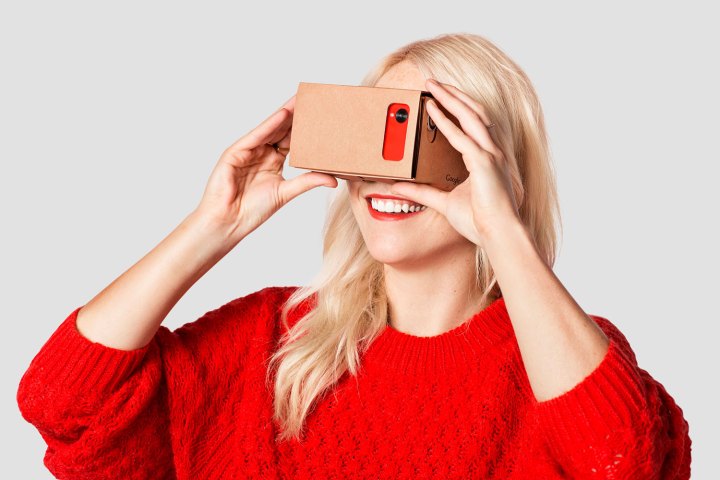
You know Google Cardboard? The super cheap virtual reality headset made from a sheet of foldable cardboard and a pair of lenses? Ever since it was first announced back in 2014, dozens of companies have developed their own take on the idea, and nowadays you can get your hands on a fully functional cardboard VR headset for about 20 bucks — sometimes even less.
That’s pretty damn cheap by most people’s standards, but what you might not realize is that you can build a DIY version for even cheaper. Google open-sourced the design specifications for the headset shortly after they announced it, so you can easily build your own with a few basic hand tools, a spare sheet of cardboard, and some cheap lenses from Amazon.

You can access all of Google’s technical specifications and design schematics here — but truth be told, Google’s directions are so comprehensive that they’re almost confusing. So, in an effort to keep things simple and easy-to-follow, Instrucables user mnatanagara put together a much more approachable build guide. We like these plans better than Google’s, since they doesn’t require you to make a bunch of measurements and draw out all the parts. Instead, you just print a template on regular printer paper, glue it to your cardboard, cut everything, and fold it together. Here’s everything you’ll need to get started:
Tools:
- Utility knife/razor
- Scissors
- Metal edged ruler
- A large, solid cutting surface
Materials:
- Printed templates (download them here)
- Glue (both stick-style and Elmers)
- A 2’x3′ sheet of corrugated cardboard.
- Pro Tip: you might want some extra for your first build, just in case you make a mistake. Also, thinner shoebox-like cardboard is best, but you can make do with the thicker “moving box” variety if that’s all you’ve got. Just don’t expect all the pieces to fold nicely if you use the thicker stuff.
- A pair of , either 25mm in diameter (GC 1.0) or 37mm (GC 2.0)
- velcro patches (preferably somewhat weak)
- A small piece of dense foam (roughly 0.25″ x 0.25″ x 1.0″)
- velcro patches (The cheaper the better. Expensive stuff is too grippy, and you only need a weak hold)
Once you’ve got everything together, you can find the full build instructions here. Happy building!



